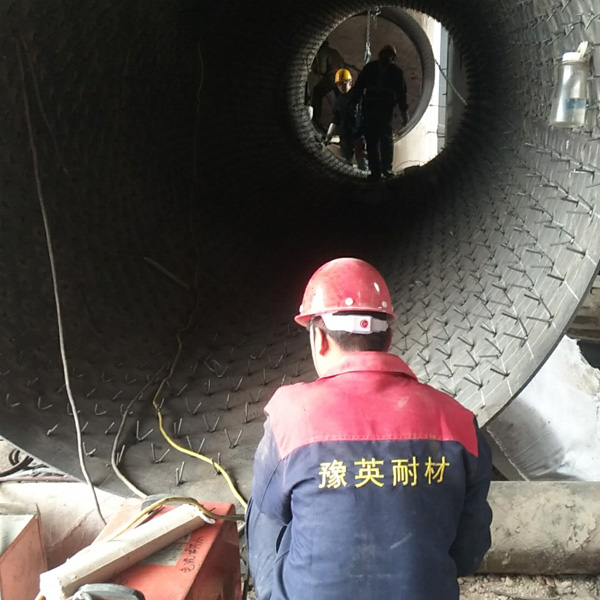
How do aerospace components withstand 500+ thermal cycles without degradation? Why do steel mills achieve 20% longer furnace lifespans compared to a decade ago? The answer lies in engineered materials that adapt to extreme conditions – specifically, custom refractory castables. These specialized formulations now serve as the backbone for industries where off-the-shelf solutions fail to meet operational demands.
Custom refractory castables distinguish themselves through three engineered characteristics:
1. Thermal endurance thresholds exceeding 3200°F (1760°C) 2. Customized porosity levels (8%-45%) controlling heat transfer rates 3. Chemical resistance matrices targeting specific slag compositions
Unlike generic alternatives, these materials undergo precision formulation using computational thermodynamics models. Manufacturers simulate operational environments to optimize the alumina-silica balance, achieving compressive strengths from 6,000 psi to 15,000 psi based on application requirements.
Seven critical sectors now mandate tailored refractory solutions:
• Power Generation: Thermal shock-resistant linings for CFB boilers (cyclonic zones endure 150°C/min temperature fluctuations) • Metal Processing: Erosion-resistant throat sections in copper anode furnaces (withstand 1.2m/s molten metal flow) • Waste Incineration: Acid-alkali dual-resistant layers (pH resistance range: 0.5-13.5) • Petrochemical: Sulfur-attack preventive linings for cracking furnaces • Cement Production: Abrasion-resistant preheater cyclones (service life extension from 6 to 18 months) • Glass Manufacturing: Non-wetting coatings against molten glass adhesion • Aerospace: Ultra-low thermal conductivity insulation for rocket engine test stands
Material scientists employ a decision matrix to determine formulation variables:
Operational Temperature → Binder Selection (Calcium Aluminate vs. Hydraulic) Thermal Cycling Frequency → Aggregate Gradation (Multi-modal particle distribution) Chemical Exposure → Additive Package (Chromium oxide/Zirconia/Silicon Carbide) Installation Method → Rheology Modifiers (Vibration-pour vs. Pumpable mixes) Service Life Target → Cement Content Optimization (8%-12% for balanced strength/ductility)
This systematic approach enables precise alignment with equipment specifications. For instance, rotary kiln installations demand castables with 180° bending strength ≥3.5MPa to withstand mechanical stresses during rotation.
The latest generation of custom refractory castables integrates nanotechnology for enhanced properties:
- Graphene-doped matrices improve thermal conductivity by 40% (critical for heat recovery systems) - Nano-clay additives reduce water demand 22% while maintaining 90 MPa cold crushing strength - Self-healing microcapsules extend lining lifespan through crack-sealing at 1450°C - Phase-change material inclusions stabilize thermal profiles during process upsets
These innovations enable cement plants to achieve specific energy consumption below 2.9 GJ/ton clinker – a 15% reduction from conventional linings.
Proper application protocols ensure optimal performance of tailored refractory systems:
1. Surface Preparation: Achieve ISO 8501-1 Sa 2.5 cleanliness standard 2. Formwork Design: Maintain 0.5-1.5% expansion joints for thermal growth 3. Water Control: ±0.3% deviation from specified mix water content 4. Curing Regimen: 48-hour humidity control at 25-40°C 5. Firing Schedule: 10°C/hour ramp rate through critical phase transitions
Adherence to these parameters prevents premature failure modes like spalling or joint separation, particularly in applications with thermal gradients exceeding 800°C/cm.
While custom refractory castables command 25-40% cost premiums over standard products, their total operational economics prove superior:
Maintenance Interval Extension: 3x reduction in downtime frequency Energy Efficiency Gains: 8-12% fuel savings through improved insulation Waste Reduction: 90% decrease in spent material volume via lifespan extension Safety Improvements: 70% reduction in thermal incident risks

Quantitative analysis shows 18-24 month ROI periods for most industrial users, with petrochemical crackers realizing $2.3M lifecycle savings over 7 years.
Emerging industrial challenges demand next-generation refractory solutions:
• Hydrogen-ready formulations resisting H2 embrittlement at 850°C • Carbon capture system linings tolerant to amine solvent exposure • Plasma arc furnace linings with 99% arc erosion resistance • Additive-manufactured refractory components with embedded sensors
Continuous R&D in binder chemistry and aggregate engineering positions custom refractory castables as critical enablers for achieving net-zero industrial processes. The integration of machine learning in formulation development now reduces prototype testing cycles from 18 months to 22 weeks, accelerating performance breakthroughs.
Effective collaboration between plant engineers and material specialists follows this workflow:
1. Operational Data Collection (6 months of thermal/chemical profiles) 2. Failure Mode Analysis (Post-mortem of previous lining samples) 3. Digital Twin Development (FEA modeling of thermal/mechanical stresses) 4. Prototype Formulation (Lab-scale testing under simulated conditions) 5. Field Trials (Pilot installation with embedded monitoring) 6. Full-Scale Deployment (Performance-based service contracts)
This rigorous approach recently helped a titanium smelter achieve 11-month lining lifespan – 367% improvement over previous standard materials.
Leading-edge production methods now address environmental concerns without compromising performance:
- 100% recycled aggregates in select formulations (30% reduced embodied carbon) - Bio-derived binders replacing traditional cementitious systems - Water recycling systems achieving 95% process water recovery - Kiln firing powered by waste process heat recovery
These advancements support circular economy goals while maintaining critical performance parameters – current eco-formulations demonstrate equivalent mechanical properties to conventional materials at 1600°C service temperatures.
Understanding key material parameters ensures proper selection:
Parameter | Test Standard | Performance Range Cold Crushing Strength | ASTM C133 | 50-150 MPa Permanent Linear Change | ASTM C113 | ±0.5% @1600°C Thermal Conductivity | ASTM C201 | 0.8-2.8 W/m·K Abrasion Resistance | ASTM C704 | <10 cm³ loss Acid Slag Resistance | DIN 51069 | Class A1-A4
Advanced users now specify application-specific testing protocols, including cyclic corrosion testing (CCT) combining thermal shocks with chemical exposure simulations.
Implementing custom refractory solutions requires cross-functional expertise:
1. Thermal Engineers: Analyze heat flux patterns 2. Materials Scientists: Optimize crystalline phases 3. Data Analysts: Interpret condition monitoring outputs 4. Application Specialists: Ensure proper installation techniques
This multidisciplinary approach recently enabled a copper refinery to reduce annual maintenance costs by $1.2M while increasing smelting throughput 18% through optimized lining designs.
Evolution of refractory technology illustrates accelerating advancements:
1980s: Monolithic linings replace brick construction 2000s: Self-flow castables enable complex geometries 2015: Nano-modified binders commercialized 2023: AI-optimized aggregate gradations 2026 (Projected): Self-monitoring linings with embedded IoT sensors
Each innovation phase delivers 30-70% performance improvements, with current R&D focusing on materials capable of 2000 thermal cycles without strength degradation.
The shift toward tailored refractory solutions represents more than material science progress – it embodies a fundamental change in industrial asset management philosophy. By aligning material properties with precise operational demands, process plants unlock unprecedented efficiency, safety, and sustainability benchmarks. As thermal processes intensify across industries, the strategic selection and implementation of custom refractory castables will increasingly differentiate market leaders from competitors.


